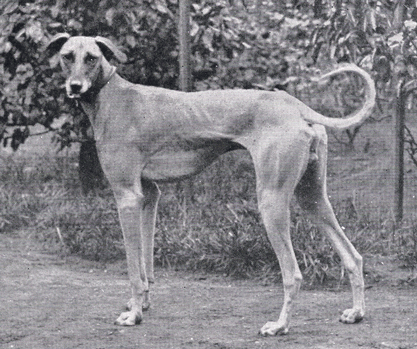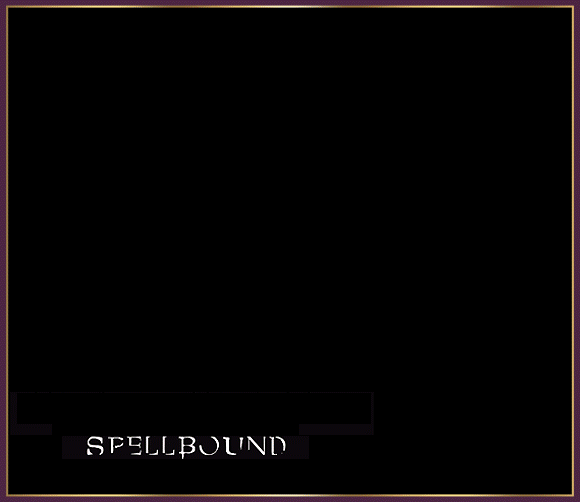The Sloughi – An Ancient Hound Whose DNA Predates Christ
An ancient hound whose DNA predates Christ joins the ranks of AKC’s blue-bloods.
by Amy Fernandez
There’s gotta be a hole in the fence over there at AKC. It’s the only way to account for the unprecedented invasion of the new breeds roaming around 250 Madison Avenue these days. Of course, many of them are hardly new. For instance the Sloughi has been a fully-fledged FCI breed since 1934. The current FCI standard, published in 1998, describes this ancient Sighthound as “a very racy and elegant dog…Although noble and haughty, he is very attached to his master and defends him in case of need. With the instinct of a hunter, capable of sus-tained effort, he also appreciates the home comforts.” That’s an interesting observation con-sidering the Sloughi’s roots. Also known as the Arabian Greyhound or Berber Greyhound, FCI currently designates Morocco as its country of origin although the standard concedes the Sloughi’s indigenous territory extends far beyond there. For centuries, it has been the go-to hunting dog, and guardian, and revered companion of nomadic tribes throughout Magreb, Algeria, Tunisia, Morocco, and Libya.
Famed for their seaworthy boats and skilled celestial navigation, the Phoenicians are generally considered the instigators of matchmaking between Asian and North African dogs that resulted in quite a few breeds. Phoenicians colonized much of the Mediterranean by 1200 BC, founded Carthage in 814 BC, and eventually monopolized all major trade routes within this vast territory until the fifth century BC.
Their capitalist diligence facilitated cultural contact between diverse populations of the ancient world which inevitably blended breeds from North Africa, Greece, Sicily, Malta, Spain, and Southern Italy. Among others, the Sloughi emerged from this genetic mash-up. However, recent DNA analysis also shows that the breed subsequently developed as an isolated strain in North Africa for several thousand years.
That pretty much characterized Sloughi life until 1830 when French military forces barged into North Africa and commandeered the territory now comprising Algeria.
The French occupation of Algeria became the gateway to the Sloughi’s remake as a modern purebred. Much of this occurred within the overall context of surging interest in dog shows and purebreds that rapidly picked up steam in the 1870s. Scores of obscure breeds that had been ignored and overlooked for centuries suddenly became headline news within this newly minted purebred paradigm. Nothing illustrates this better than the broadening scope of breeds featured in nineteenth-century dog books. Traditionally popular British breeds suddenly found themselves keeping company with canine rarities.
Another equally significant factor contributing to public interest in the Sloughi was the launch of mass market tourism. By the 1880s, steamships and railroads dramatically improved the speed, efficiency, comfort, safety, and, most of all, the affordability of intercontinental travel. For the first time in history, the average person actually could visit exotic lands that had fueled fantasies for generations. Of course, most people didn’t hop a freighter to explore the South Sea Islands. But that tantalizing possibility sparked voracious interest in every aspect of foreign culture. Along with art, food, and fashion, the public became fascinated with the exotic dogs hidden in obscure corners of the world. Unusual breeds like the Borzoi, Samoyed, St. Bernard, and the Sloughi suddenly found themselves starring in mass market publications like Harpers Weekly.
The Sloughi’s graceful elegance and exotic heritage also inspired legions of painters and sculptors during the nineteenth century. A wonderful sampling of Sloughi art is featured in Dr. Dominique De Caprona’s gorgeous 2007 book The Sloughi 1852-1952. The painters Jean-Leon Gerome (1824-1904) and Henri-Emilien Rousseau (1875-1933) and the sculptors Antoine Louis Bayre (1796-1875) and Pierre Jules Mene (1810-1877) are just a few of the renowned artists who featured the Sloughi in their work.
Sloughis were regularly exported to Europe during the late nineteenth century often through advertisements in market publications promoting the breed for coursing, coaching, and exhibition. However, as Caprona explained in her book, the breed’s aesthetic appeal also led to the first foundation breeding program in Europe. Artist Auguste Le Gras encountered the Sloughi during his years working and traveling through North Africa. Like countless other artists, the breed’s “elegant lines appealed to Le Gras’ romantic mind.” Gras received his foundation bitch ‘Muska’ (which charmingly translates as The Grabber) in 1896 as a gift while living in Algeria. He brought her to Holland in November 1898 along with her son and daughter that were whelped in Algeria. The Sloughi debuted as a purebred a few months later when he showed all three at the 1899 Amsterdam Winners Show. A year later Gras imported a dog from central Tunisia called ‘Schaab’ and ‘Zeina’, a bitch from Tunis. She subsequently whelped one of three litters that Gras bred in Holland in 1901. These dogs became the basis of his Beit es Sleq bloodline. It was reported, “The pedigrees of almost all Sloughis of those pre-war days descend from these three litters of Auguste le Gras.”
Caprona meticulously documented the evolution of these early bloodlines beginning with a puppy from Gras’s first litter, Sidi Sheig II. Owned by Michel La Fontijn, he became the breed’s first Dutch champion and the sire of several important litters. It was reported, “Shortly thereafter Sloughi breeding had become a serious endeavor in Holland.” In 1903 this core group headed by Fontijn and Gras, who served as president, established the first Sloughi studbook and national club. Three years later, they published their Sloughi standard. “All this was achieved with a speed, grandeur, and love for the breed that one can still feel when going through the old publications, yellowed by age, and the old photographs…that show a particular devotion to the breed at a time when taking photographs was no simple task.”
Along with achieving recognition for the Sloughi in Holland, Gras maintained his Beit es Sleq breeding program for 20 years. By 1937, 340 Sloughis were documented in the Dutch studbook. The breed also had a broad base of support in France. That largely be-gan with returning members of the French military. As Caprona no-ted in her book, they not only developed an ap-preciation for the breed while stationed in North Africa, it was matched by a proprietary attitude. She wrote, “Because they occupied Algeria, Tunisia, and Morocco, the French considered the Sloughi to be a French Sighthound breed by ‘right of the conqueror’. Interestingly, the French Club Francais du Sloughi maintained ongoing ties with North African breeders and extensively promoted the breed’s functionality through coursing and racing. She continued, “At the time when Sloughis were starting to be presented at dog shows, other owners were impressed by the speed and agility of the Sloughi. The hunting talent of the breed had always been admired. However, the Sloughi could not hunt in France because of the 1844 French law prohibiting Sighthounds from hunting. Racing and coursing became alternatives.” A nucleus of Sloughi interest also developed in Germany by the turn of the 20th century although the breed never achieved sufficient support to trigger the formation of a German club at that time. Sadly, as was the fate for many European kennels, World War II obliterated all of the work of those early Sloughi breeders…
Click here to read the complete article on page 130 of the May, 2016 Issue
Short URL: https://caninechronicle.com/?p=103266
Comments are closed













